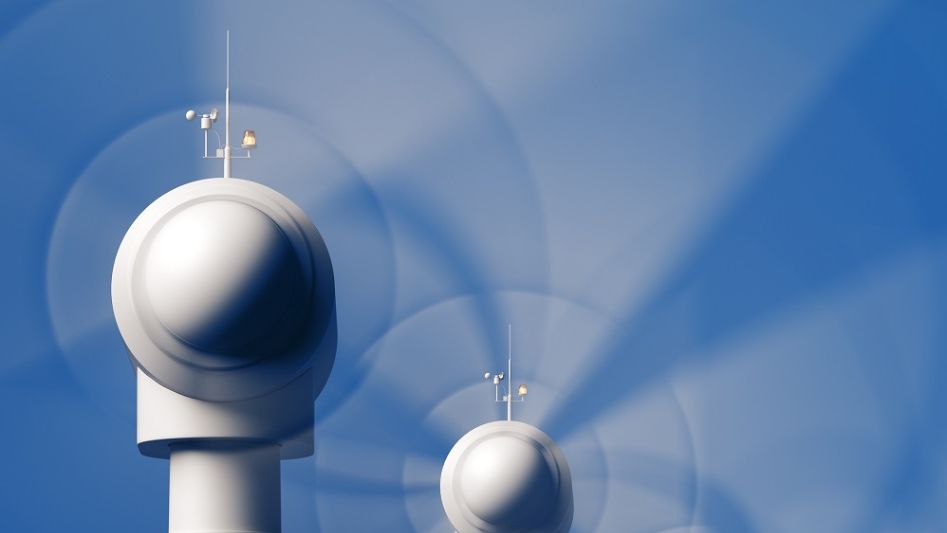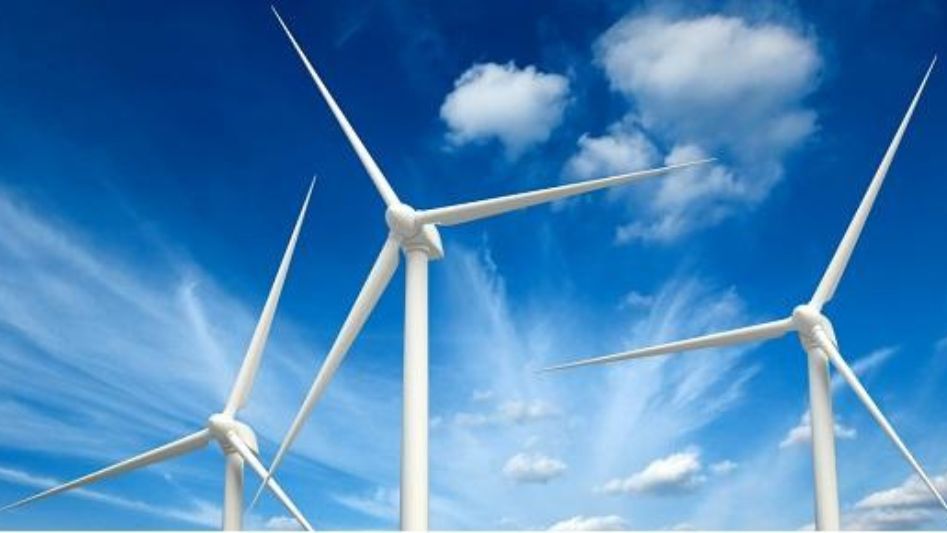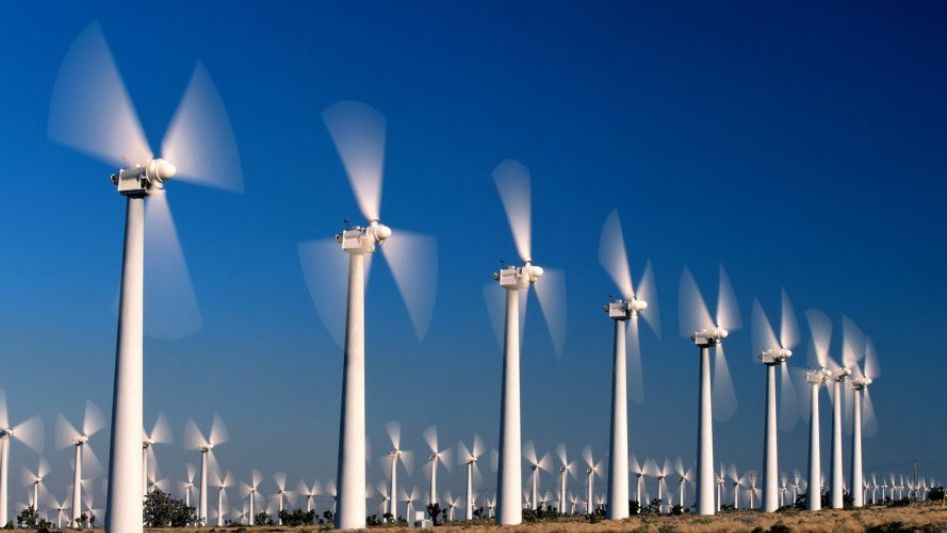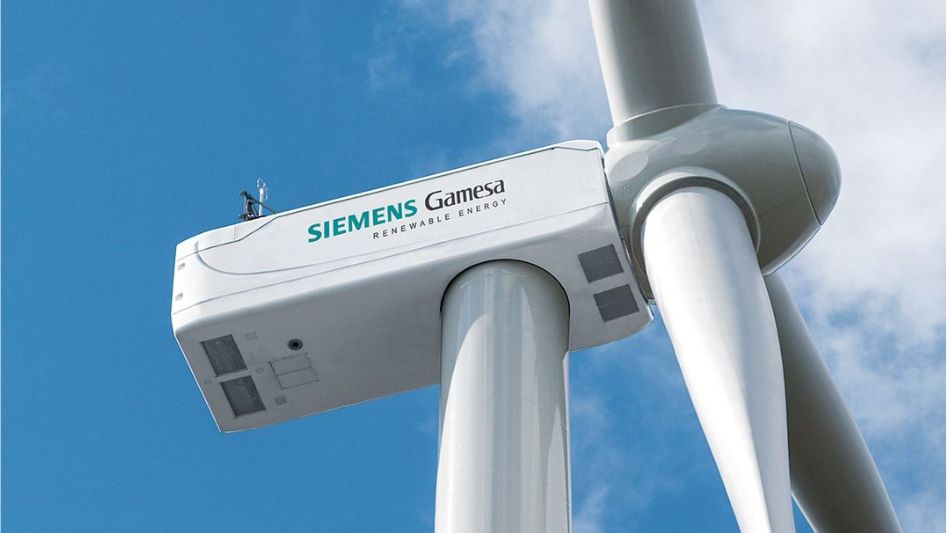The wind turbines speed at the site will determine the optimal rotor speed and the amount of energy produced by the turbine.The faster it spins, the more energy.
Table Of Content
- Introduction
- The Maximum Speed of Wind Turbines
- Exploding Wind Turbines in Extreme Weather Conditions
- How Much Energy Can Turbines Take From the Wind?
- Conclusion
- FAQ
- You May Also Like
- External Links
On a recent vacation, as I passed by an area filled with wind turbines, I couldn’t help but wonder how fast the blades could rotate before they broke. After that, I researched the highest speed that wind turbines are capable of and the consequences of exceeding that limit.

Is there a limit to how fast wind turbines can turn? Internally, each wind turbine is pre-set to operate at a maximum speed, which is determined by the overall dimensions and specifications of the device. When this speed is reached, various braking devices will be activated, which will cause the blades to come to a halt automatically.
Wind turbines are constructed such that they can withstand less-than-ideal weather conditions without sustaining damage. The sophisticated technology within the devices takes note of the different wind speeds and responds appropriately. Nevertheless, these safety features won’t safeguard the wind turbines in every possible scenario.
The Maximum Speed of Wind Turbines
Wind turbines get their name from how their blades rotate in response to the direction and velocity of the wind. If there is no wind, there will be no reaction from them in the form of movement. When the minimum speed of the turbine is exceeded, it will use its internal features to identify the exact wind speeds and then transmit the message to the rest of the machine. Anemometers are a frequent instrument for use in this capacity.
After the information about the wind speed has been gathered, the rotor will spin the blades, and the blades will continue to build momentum off of the wind while simultaneously taking the kinetic energy of the wind and sending it through the tower.
The maximum speed that is ever measured by a wind turbine is referred to as the “cut-out speed” or the “survival speed” in some circles. This figure is derived by considering the proportions of each turbine during the calculation process.
The maximum speeds of smaller turbines situated closer to the ground will typically be lower than those of larger turbines, which may be able to endure greater gusts without the blades suffering any significant damage.
The typical survival speed for any given range of turbine size can be anything from 100 to 130 miles per hour, with the maximum speed for larger machines being 180 miles per hour. This programming is essential for every wind turbine to provide the highest possible levels of security and performance.
These limitations are denoted by an equation known as a power curve, which displays, at the beginning of the curve, the cut-in speed, also known as the lowest amount of wind power necessary for the turbine to start rotating, and, after the curve, it displays the optimum cut-out speed.
The estimated pace that the blades reach just before reaching their peak limit can be determined by looking at the area that is between the minimum and maximum speeds. The power curve is not computed; rather, it is produced by comparing the measurements of power, expressed in kilowatt-hours, to the speed, expressed in meters per second, at which the blades are spinning and then plotting these two sets of numbers on a graph.
The process by which wind turbines bring their blades to a stop when they have reached their top speed
When the accelerometer detects wind speeds greater than the cut-out speed, it communicates this information to the wind turbine to instruct the blades to cease their rotation autonomously.
During this stage of the process, the yaw drive will point the rotor in the direction from which the wind is blowing to alter how the wind blows across the surface of the blades. This technique is also known as pitch braking or aerodynamic braking. A motor is situated between the blade and the rotor hub, and it is this motor’s job to connect the two parts of the rotor.
The motor will rotate the blades so that the wind will be forced to pass through the spaces between them without contributing any more velocity to the rotation until the motor eventually stops them. Alternately, the motor component of certain wind turbine designs might be situated on the end of the blade rather than at the area close to the rotor hub.

When pitch braking is engaged, the blades will continue to spin in the same manner away from the direction in which the wind is blowing from the motor until they are no longer spinning.
If the mechanical braking system installed on the turbine cannot stop the blades from rotating, the system will revert to using the aerodynamic braking system.
When the turbine applies its mechanical brakes, the components included inside it will create the rotor so that it may be stopped manually instead of allowing the rotation to cease as it does when the turbine applies its pitch brakes gradually. The mechanical brake has the appearance of a circular disc with several empty holes.
If it is necessary to bring the turbine to a halt in an emergency, a stopper will be inserted through the holes to prevent the blades from continuing to rotate. However, there are more efficient uses of the turbine’s potential than braking in this manner.
The rotor and blades are both highly heavy, and the friction that results from their interaction can cause damage to the turbine’s internal components. When this happens too frequently, it can inflict unneeded wear on the machine’s internal components and limit its lifespan. Critical braking is yet another method that can be utilized as a substitute for stopping the blades of a wind turbine. When this occurs, the rotor will begin a motion that revolves in the reverse direction to gently stop the blades from moving. This is done to prevent damage to the blades.
This action will cease before it can start causing the blades to rotate in the other direction, which might cause the elements to scrape together and ruin the machine in the same way as it does when a mechanical brake is applied.
As indicated earlier, wind turbines are designed to stop spinning if the ambient conditions are deemed too severe to perform their intended functions and automatically. However, natural disasters such as hurricanes and tornadoes can cause structural failure to the outside components of the turbines. This damage could result in the turbines not functioning properly.
After the storm has passed, the blades of offshore turbines placed near the water may be twisted, or the turbines may topple over altogether. Studies are being conducted at the moment to find ways to improve wind turbines’ architecture so that they can better resist the kinds of severe weather conditions that are now being experienced.
Exploding Wind Turbines in Extreme Weather Conditions
In 2011, a video of a wind turbine in the UK exploding from the interior owing to exceptionally fast winds was discovered on the internet. The incident occurred in 2011. This occurred due to a breakdown of the brakes and persistently powerful gusts of wind, which led the turbine to lose control of itself and spin out of control.
In high winds, friction during various braking methods can cause the turbine sections to overheat internally. When wind turbines come to a stop, they are expected to modify their rotation speeds and turn their blades so that they face the direction that the wind is blowing. This is done so that the turbines do not gather momentum from the wind.
On the other hand, internal overheating might result in losing control of this function, which means that the blades will not turn in the appropriate direction.
If something like this occurs, the generator will begin to overheat, which will cause sparks of a fire to be created inside the turbine. If the turbine cannot stop itself through aerodynamic means, the emergency mechanical brake will engage, forcibly stopping the movement by fixing the blades in their current position.
Even if the mechanical process of breaking provides resistance against the blades, there is still an intense buildup of heat within the turbine. Because of the consistent wind speeds, the blades will continue to move in opposition to the force applied by the braking system, which will ultimately result in the whole thing exploding from the inside out.
In conclusion, all wind turbines have maximum speed thresholds that have been predetermined, in addition to particular brake features that kick in to ensure that these limitations are adhered to. While it is true that each turbine is equipped with these protection elements, it is also true that they cannot always prevent damage from occurring in the case that extreme weather conditions are present.
How Much Energy Can Turbines Take From the Wind?
Although we know that the blades of a wind turbine can reach speeds of up to over 200 miles per hour at their peak, the actual amount of kinetic energy that the blades can harvest from the wind is a completely different statistic.
The Betz Limit is a theory that describes the maximum amount of power that can be extracted from the wind by a wind turbine. This limit is referred to as the maximum amount of power a wind turbine can extract. It suggests that turbines can only catch exactly 59.3% of the wind’s kinetic energy at any given time, regardless of how quickly the blades rotate at any given moment.
The quantity of usable energy that can be extracted from each turbine will be determined by its size and a number of other factors. Large turbines that are used on utility scales have the potential to reach up to 80 percent of this limit as a maximum.
Conclusion
Even though turbines can achieve extremely high rotational speeds, they should move at a little more leisurely pace. Stability is given higher priority than speed because excessively rapid momentum can cause damage to the components that do the work and reduce the overall lifetime of each turbine. The maximum speeds of the most recent generation of turbines are currently being designed to be lower.
FAQ
Why does the rotational speed of the wind turbine remain constant
Controlling the rotational speed is necessary for the effective generation of power as well as for maintaining the speed and torque limits of the turbine components. Because the centrifugal force on the blades increases as the square of the rotation speed increases, this structure is sensitive to increasing the rotation speed beyond a certain point.

How quickly must a wind turbine turn to be effective?
Wind turbines take a certain amount of wind speed (usually between kilometers kilometers per hour) to start turning and producing power. High winds (between 50 and 60 kilometers per hour) to generate at full capacity. Winds of less than 90 kilometers per hour; at that speed, the turbines must be turned off to prevent damage.
What causes some wind turbines to rotate at a quicker rate than others?
The speed of a turbine can also be affected by the dimensions and configuration of its rotor blades. Blades that are intended to be more aerodynamic and have a larger surface area can spin at a faster rate. Larger blades have the potential to capture more wind.
What may be causing so many wind turbines to stop turning?
Why do the wind turbines sometimes stop turning? The lack of sufficient wind speed is the most prevalent cause of turbines losing their ability to generate electricity. Most wind turbines require a constant wind speed of at least 9 miles per hour to function properly. Technicians will also halt the turbines to execute necessary repairs or periodic maintenance.
You May Also Like
- Can Wind Turbines Withstand Hurricanes?
- Windmills: Definition, History, Types & Facts
- Why Wind Turbines Need Gear Boxes?
- What Is A Helical Wind Turbine?
- The Future of Wind Turbines? No Blades

